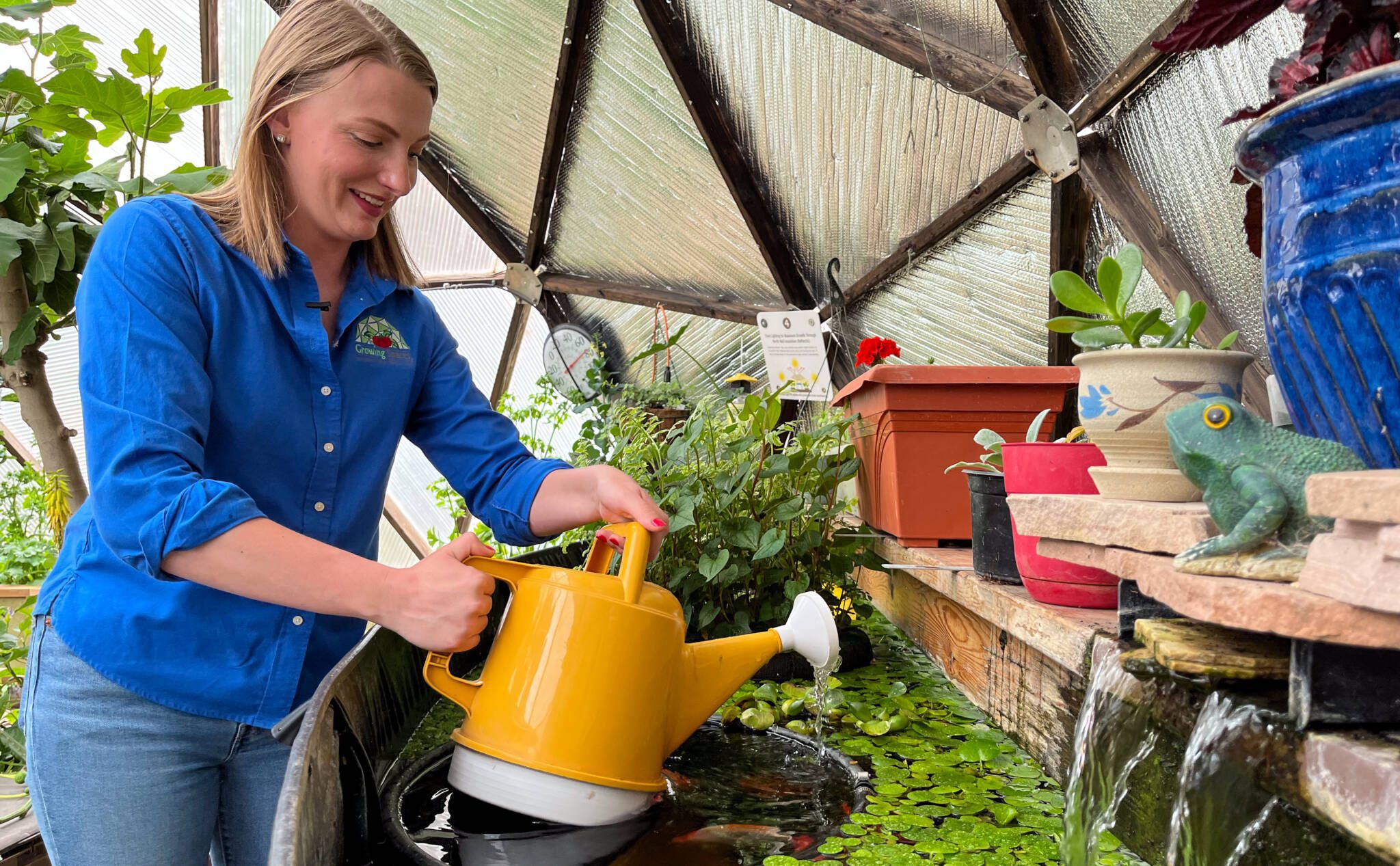
Starting off with healthy soil is going to be key when it comes to water retention. The types of crops, season of the year, and method of watering are all going to impact your water needs. Watering is a crucial step to all forms of gardening, but especially important for greenhouse growers. This is because greenhouses can often create unique conditions – little to no wind (except in front of the fans), increased humidity, regulated temperatures, and shorter crop cycles. There are also various microclimates within the Dome that create unique conditions. These factors can make watering a bit tricky to figure out as a new greenhouse grower. Let’s get into the basics of watering best practices!
Healthy Soil
Good water retention starts with healthy soil. Notice how we say soil and not dirt. Soil contains living organisms like fungi and beneficial bacteria that are needed to support plant life. Dirt is the sand, silt, clay, pebbles, and other inorganic compounds within the soil.
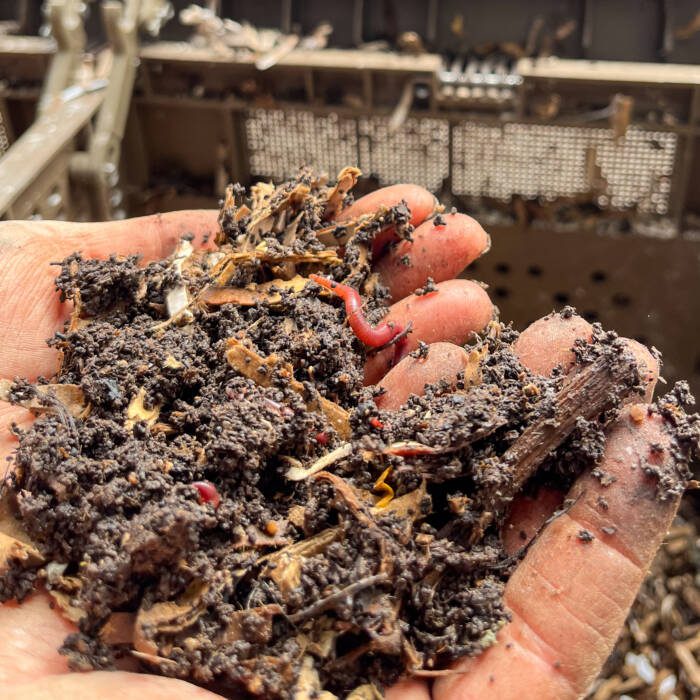
Amending your soil can help to revitalize hydrophobic soil and provide your plants with vital nutrients. Hydrophobic conditions happen when the living organisms in the soil begin to die off due to lack of moisture. This can happen especially in greenhouse environments if soil is not watered for a period of time.
There are many ways to amend your soil to aid in retaining water such as adding compost, composted manure, worm castings, whey, and mycorrhiza. Soil that contains peat moss or coco coir will also help to retain water. Molasses is also a great thing to add into your soil to feed the organisms.
Crops and Seasonality
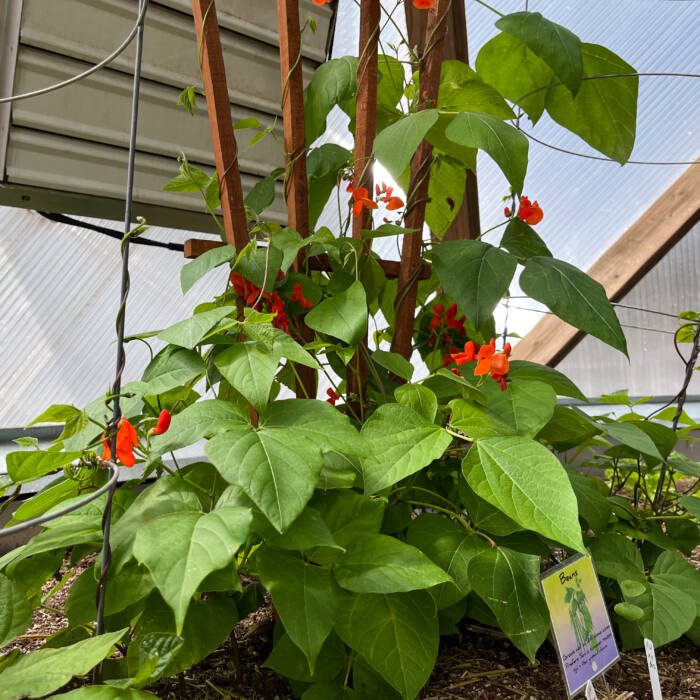
Watering should be done throughout the year, however the frequency will vary depending on the crops you are growing and the season of the year. In late spring, summer, and early fall you will likely be watering your greenhouse garden every day or at least every other day. In late fall, winter, and early spring when temperatures are more mild you will likely be watering much less frequently about once a week.
Certain plants have special watering considerations. Legumes like peas and beans appreciate more water in their flowering stage. While tomatoes and squash like more water in their fruiting stage. Leafy greens prefer regular watering throughout their lifecycle.
Watering Methods
Hand watering is my preferred method. Watering out of the pond is highly recommended as the fish waste is great for plants. Along similar lines, watering with compost tea or banana water is also great for plants. These are perfect ways to add nutrients and water simultaneously.
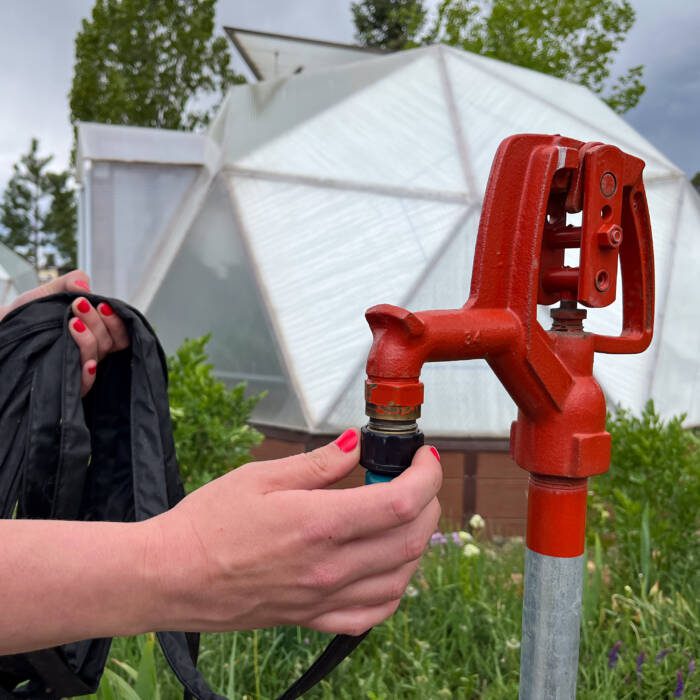
Utilizing a water hose is another method to water your garden. If you have a hose that is continually hooked up, just make sure to let the water run until it is cool. We do recommend building your Dome in close proximity to a water spigot or running a water line prior to construction of your greenhouse.
You do need to make sure to properly map out your Growing Dome orientation so that you avoid the doorway, pond, and account for the curvature of the Dome. Having a hose close by is not only great for easy watering but also for filling and refilling the pond.
Irrigation systems can be helpful for those that take trips away from the Dome, those that are not capable of watering daily, or for those that just don’t want to be watering daily. There are multiple manufactures and systems on the market that all basically accomplish the same goal. Growing Spaces does carry a solar powered irrigation system that comes with everything needed to set it up including 155’ of distribution hose and 50 nozzles. If you are going to irrigate directly from your pond, make sure that you have a filter or a filter bag covering the pump to prevent clogs.

Dome Zones
You may notice that the southern bed dries out a bit faster than the other Dome zones. The southern side receives the longest amount of sun exposure throughout the day whereas the center bed is often shaded by the shade cloth or larger trees that have been established in the Dome. The west and east sides of the dome will receive more limited amounts of sunlight either in the morning or afternoon.
Testing Moisture Levels
Too much or too little water can lead to pest issues, so finding a happy medium is key to success. Using a soil probe, moisture meter, or the old fashioned finger test are great ways to find that sweet spot. Make sure that you test the moisture levels in various spots within your Dome so that you can get an accurate reading of which zones require more or less water on a given day.
If using the finger method, place your index finger in the soil of your raised garden bed up to your first knuckle. If your finger comes out clean and the soil feels dry, that means it is time for some water!
The moisture meter provided in your Growing Dome kit works by measuring the electrical conductivity of the soil. Water is a great conductor, so if the soil is moist the electrical currents will be higher. You will be able to easily read the meter and tell if your soil needs more water.
A soil probe is a tool that has a pointed end and a few notches in it. Simply stick the pointed end of the probe into the soil and lift up. This will give you a better look at the moisture content of various levels of your soil.
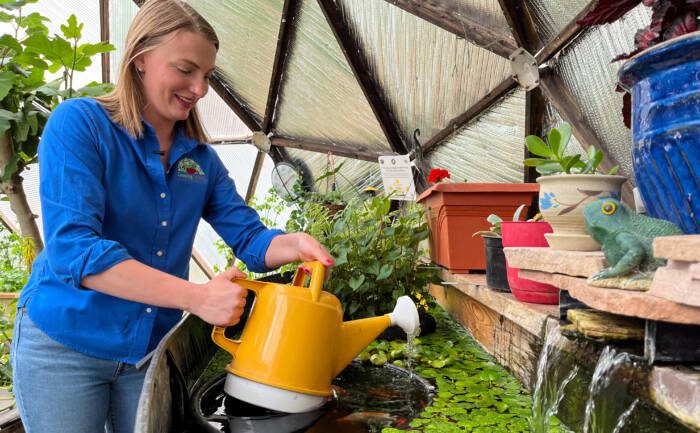
Other Considerations
Watering should be done in the morning hours or the evening, before or after the heat of the day. There are some sources that suggest morning is best because the plants have the entirety of the day to dry off before nightfall. That being said you should try to avoid watering your plants leaves as it can lead to powdery mildew issues especially with squash and tomatoes.

The exception is if your plant is experiencing an aphid infestation, in which case spaying the leaves with a high pressure hose can help to knock off those pests and keep your plants healthy. Try your best to do this in the morning hours for reasons mentioned above.
It is best to thoroughly water your raised beds, not just spot watering around plants. Making sure to saturate the entire bed will help to ensure that the plant’s roots grow deep. Spot watering or just giving your raised beds a little sprinkle of water can lead your plants to maintain a shallow root structure and thus dry out more quickly leading to more frequent watering.
Because young seedlings and young trees do not have established root systems yet, it is important to make sure to keep the soil surface moist. Furthermore, even if you do not have any plants in your raised beds, watering the soil is important to prevent the bacteria and fungus from dying off and leading to hydrophobic conditions.
You may also like: How to Improve Garden Soil Over the Winter, Climate Battery Greenhouse Design, and Adding Soil to Your Garden Beds
Join the Inner Circle
An exclusive place for year-round gardeners. Join us to receive our monthly newsletter, “The Happy Grower”. In our newsletter we provide community stories, event updates, expert gardening tips, and exclusive offers.

2 Comments
I’m a new “Horticultural Copywriter” who “sows the seeds of gardening products and services in the fertile minds of ideal customers”. I’m just beginning my website … but in the future, you can expect to hear from me. I’ve been fascinated by your domes for years!
Thank you! If you’re ever in Pagosa Springs, Colorado call us to set up a tour!